
Dramatic coastlines, half-timbered towns, thatched cottages, and rolling green hills—Normandy is a region that feels like it was made for wandering. It’s long been a favourite escape for Parisians (often dubbed their “21st arrondissement” thanks to its proximity and charm), but it’s just as inviting for travellers from farther afield.
I spent a month one summer on a work assignment in Le Havre and later returned for a road trip focused on Normandy’s WWII sites so I’ve had the chance to explore many corners of this beautiful region. It’s a place where history runs deep—from Viking invasions in the 9th century to the D-Day landings that helped shape the modern world. And while remnants of the past remain, there’s a calm, quiet beauty to the Normandy of today.
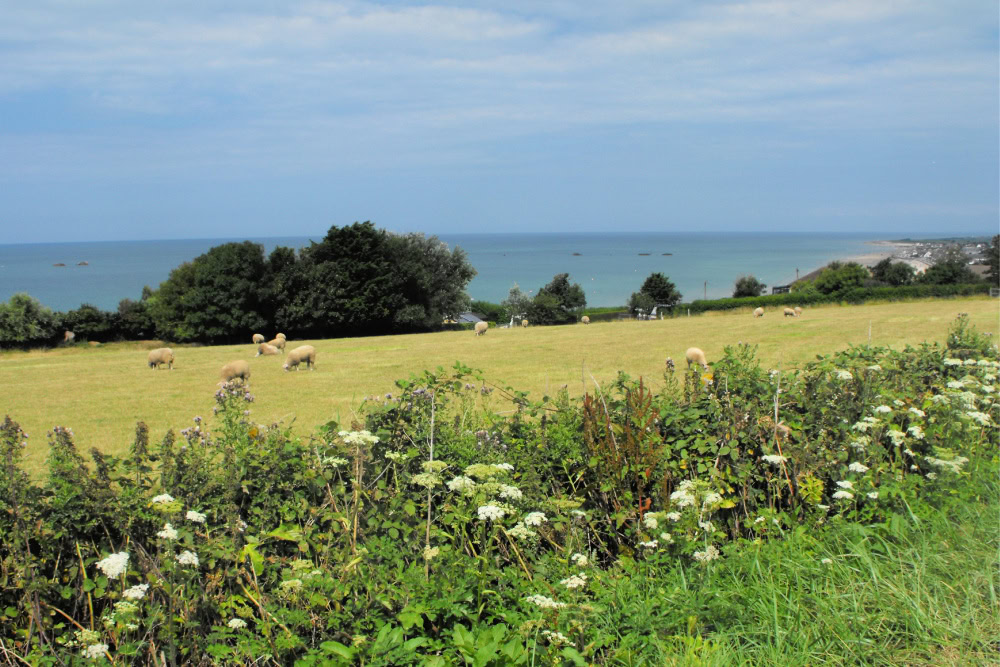
When you visit, you’ll find quaint villages, cobbled streets, and warm welcomes around every bend, along with some of the best seafood, cider, and cheese France has to offer.
Whether you’re planning a weekend getaway or a longer stay, here are eight of my top choices for places to visit in Normandy—each offering a little something special.
This post may contain affiliate links. Please read our full disclosure policy here.
TABLE OF CONTENTS
8 Great Places to Normandy, France
Honfleur escaped the destruction of WWII and remains one of Normandy’s most romantic and picturesque ports. Enclosed on three sides and lined with inviting outdoor cafés, its charm makes it a perfect starting point for any trip through the region.
The town has a rich maritime history, thanks to its prime location where the Seine River meets the English Channel. And it was from this very harbour in 1608 that Samuel de Champlain set sail for North America, eventually founding Quebec City in my home country of Canada!
Honfleur has long drawn artists to its colourful streets and harbour views. Impressionist painter Eugène Boudin was born here, and it was in Honfleur that he introduced a young Claude Monet to plein air painting. Together, they captured the magic of the Vieux Bassin with paintbrushes in hand, a tradition that continues today with artists lining the quayside.
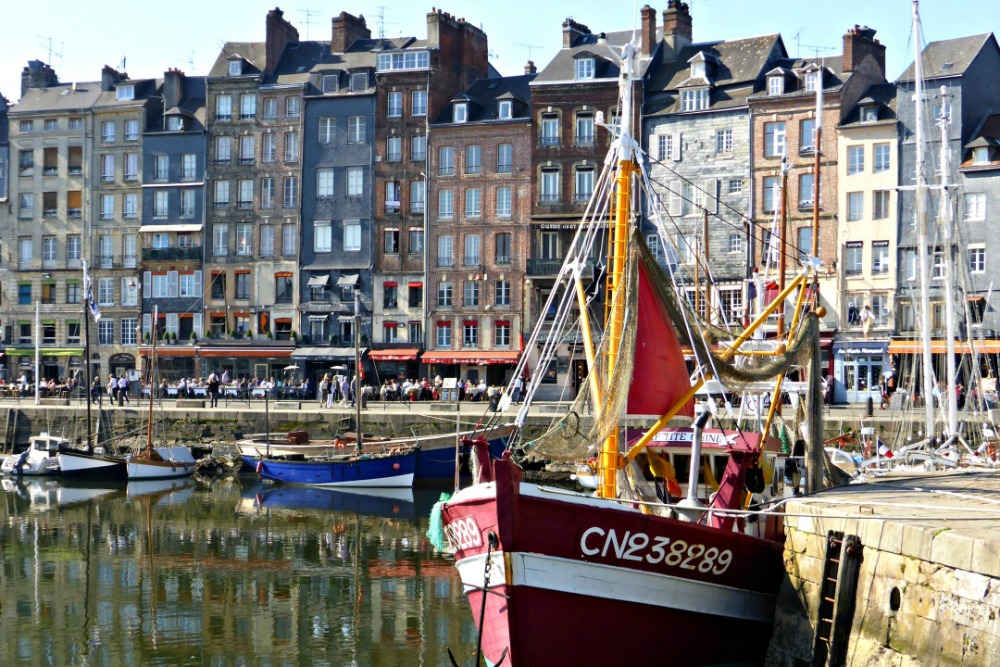
MUST DO IN HONFLEUR
Le Vieux Basin – This old harbour, dating back to the 17th century, is lined with charming houses, shops, and pretty little boats. It’s especially lovely in the early morning when the light is soft and the fishing fleet prepares for the day but do be sure to return in the evening, too.
Personally, I’ll never forget one of my first evenings in Normandy when I dined outdoors on the quayside with a work colleague and his wife. The lights reflected off the water, the seafood was scrupmtious, and the warmth of good company has made the evening one of my treasured travel memories.
Église Ste-Catherine – France’s largest wooden church is unlike any other. Built by shipwrights to replace a church destroyed in the Hundred Years’ War, it features twin naves, soaring oak beams, and a ceiling that resembles an inverted ship’s hull – all a legacy to the community of sailors and fishermen that were mast boatbuilders instead of cathedral architects. Also unique to this church is the bell tower, not built atop the church, but across the square instead!
Greniers à Sel – These massive 16th-century salt warehouses once stored tons of salt used to preserve cod. Though one was lost to fire in the 19th century, the remaining two now host exhibitions and concerts. Their thick stone walls (constructed from the town’s old ramparts) and steep oak roofs are impressive remnants of Honfleur’s maritime past.
Rouen is a 2,000-year-old city where Gothic spires, half-timbered houses, and cobbled lanes blend seamlessly with a lively, modern atmosphere. The focal point is the Place du Vieux Marché (Old Market), where Joan of Arc was burned at the stake in 1431. Today, the square is surrounded by charming buildings and features a strikingly modern church built in her honour.
Throughout its long history, Rouen served as the regional capital during Roman times and later became France’s second-largest city (after Paris) in the Middle Ages. Its wealth came largely from the wool trade, and its location—once the last bridge across the Seine before the Atlantic—made it a vital hub for commerce and culture.
Although Allied bombings during WWII damaged parts of Rouen, much of its historic core was spared. That means today’s visitors can enjoy a city rich in layers of history, perfect for strolling and discovering hidden corners, and I did just that with a work colleague who shares my love of photography and history. We wandered through its streets, cameras in hand, snapping details of old buildings and pausing often to admire the city’s beauty. Definitely another highlight from my time spent in Normandy.
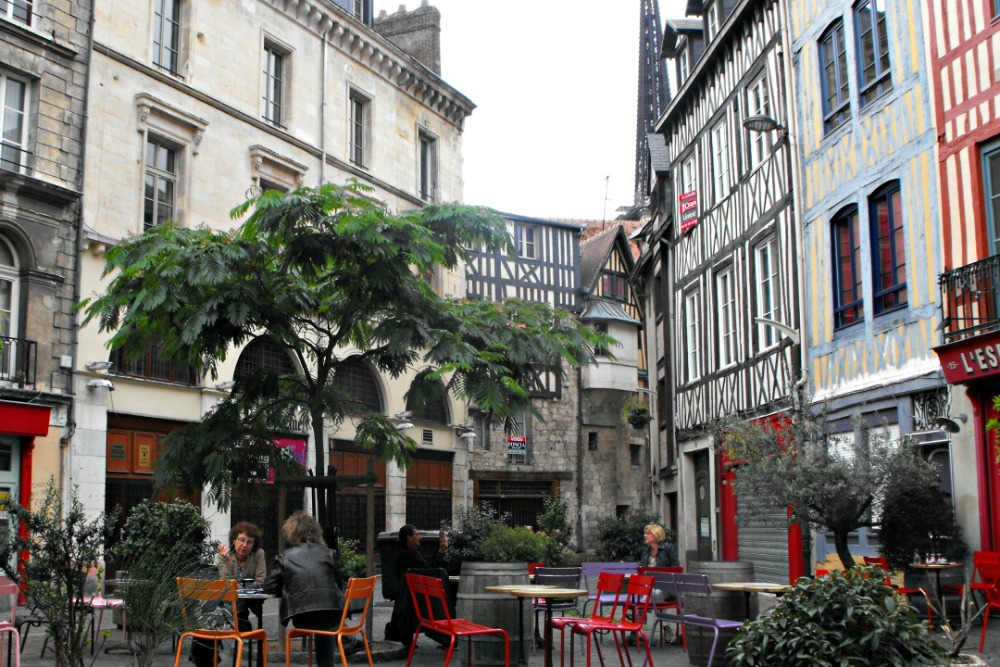
MUST DO IN ROUEN
Cathédrale Notre-Dame de Rouen – Located in the heart of the old town, this awe-inspiring cathedral took over 400 years to build. Its ornate west façade was famously painted more than 30 times(!) by Claude Monet, who was captivated by how the light transformed its details throughout the day.
Le Gros-Horloge – A Renaissance archway, Gothic belfry, and elaborate 14th-century clock all come together to form this Rouen icon. You can climb inside the structure for an excellent view over the city’s rooftops.
Rick Steves’ Self-Guided Walk – Beginning at the cathedral, this one-hour walking tour is a great introduction to Rouen’s history and architecture. It’s ideal for first-time visitors who want to get their bearings while soaking in the atmosphere.
Bayeux may be world-famous for its legendary tapestry, but the town itself is often overlooked—and unfairly so. Full of medieval charm, elegant architecture, and compelling history, Bayeux is a must-see for any Normandy itinerary.
Located just six miles from the D-Day beaches, Bayeux holds a special place in WWII history as the first city liberated after the Allied landings. Remarkably, it was spared wartime destruction thanks to the efforts of a local chaplain who made sure Allied commanders knew the town held no strategic value. A planned bombing was called off and today, visitors can walk its historic streets and admire what was saved.
Lee and I visited Bayeux on our trip to Normandy – our very first road trip together. We explored its quiet lanes, stepped inside its incredible cathedral, and stood in awe before the famous tapestry that seemed to go on forever.
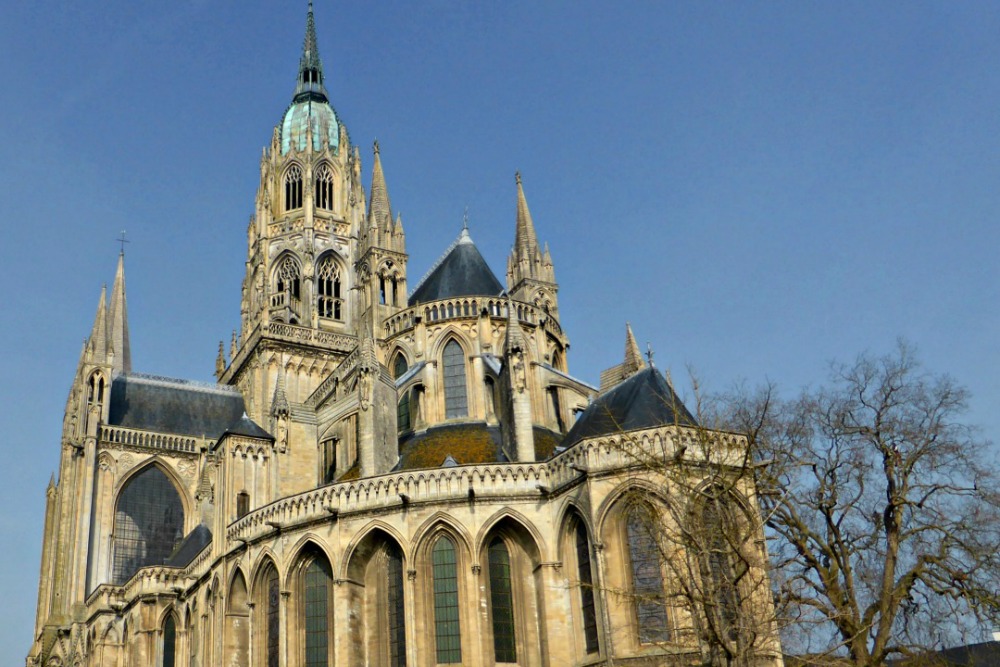
MUST DO IN BAYEUX
Cathedral of Notre-Dame – Consecrated in 1077 in the presence of William the Conqueror, this magnificent cathedral blends Romanesque and Gothic styles. The 11th-century crypt and 13th-century nave are especially beautiful, and it was once the original home of the Bayeux Tapestry for over 700 years.
Bayeux Tapestry – Housed in the Musée de la Tapisserie de Bayeux, this 70-metre-long embroidered linen masterpiece is more than 900 years old and tells the story of the Norman conquest of England in 1066 in a series of about fifty scenes. To me, the fact that it was created over nine centuries ago just makes it all the more impressive!
British War Cemetery and Memorial – The largest Commonwealth war cemetery in France, it holds the graves of more than 4,000 Allied soldiers and about 500 others, mostly German. Across the road, the Bayeux Memorial honours 1,800 men with no known grave who died in the early stages of the Normandy campaign.
It was on the beaches of Arromanches-les-Bains that the Allies established an artificial temporary harbour that allowed them to unload heavy equipment before the deep ports of Le Havre and Cherbourg could be captured.
Arromanches is in the centre of the Gold Beach (British) landing zone but it was spared as much fighting as possible on D-Day so the harbour could be installed as quickly as possible. During 100 days of operation, this temporary port allowed 2.5 million men, 500,000 vehicles, and 4 million tons of material to come ashore. To say this was an amazing engineering feat is an understatement.
Today visitors can see the remnants of the pontoons that once held up the floating roadway—but you must plan to be here during low tide to do this, otherwise they are covered with water.
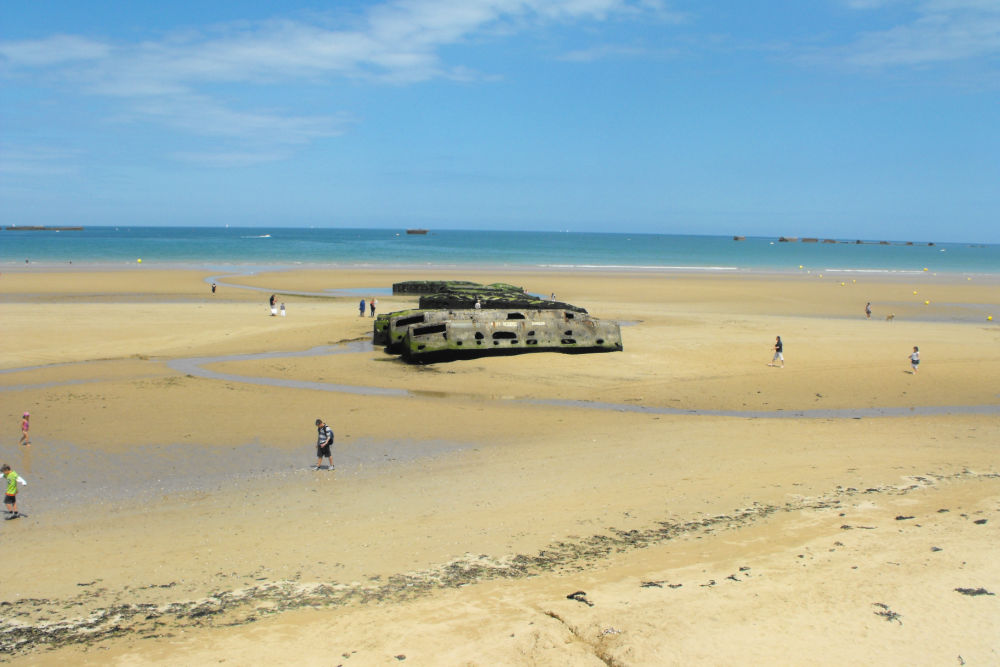
MUST DO IN ARROMANCHES-LES-BAINS
Musée du Débarquement – This museum pays homage to the famous artificial port with an amazing model that shows and explains how it all worked. If, like me, you just can’t visualize how the remnants on the beach fit together and how it worked, then this is a must-see.
Gold Beach – The beach where the British 50th Division set up the Mulberry Harbour – a testament to the ingenuity of Winston Churchill. On my first visit to Arromanches during my summer in Normandy, I arrived purely by luck at low tide and was amazed to see the remnants so clearly. When Lee and I returned together on our Normandy road trip, we planned carefully to arrive at low tide again and it was just as impactful the second time.
Arromanches 360° Theatre – Set up on the bluff overlooking the beach, this circular theatre shows a moving film called Normandy’s 100 Days. It features archival footage collected from around the world to tell the whole story of the 100 days of the Battle of Normandy. It is a tribute to the men of all nations who fell and to the 20,000 civilians killed during the liberation of Western Europe.
Once a fishing village and later a fashionable 19th-century seaside resort, Étretat is quite possibly Normandy’s most enchanting coastal town. Perched on the Alabaster Coast, this charming destination is famous for its striking white cliffs, sculpted by nature into dramatic arches and formations that truly steal the show—especially at sunset!
But there’s more to Étretat than just the scenery. The town itself is full of quaint charm, with a covered wooden market perfect for browsing local wares and picking up a few picnic treats. The pebble beach makes an ideal spot to relax and take in the atmosphere. I spent a memorable summer evening here on my own, soaking up the sound of waves on the rocky shore, people-watching along the esplanade, and simply enjoying the magic of golden hour in this coastal gem.
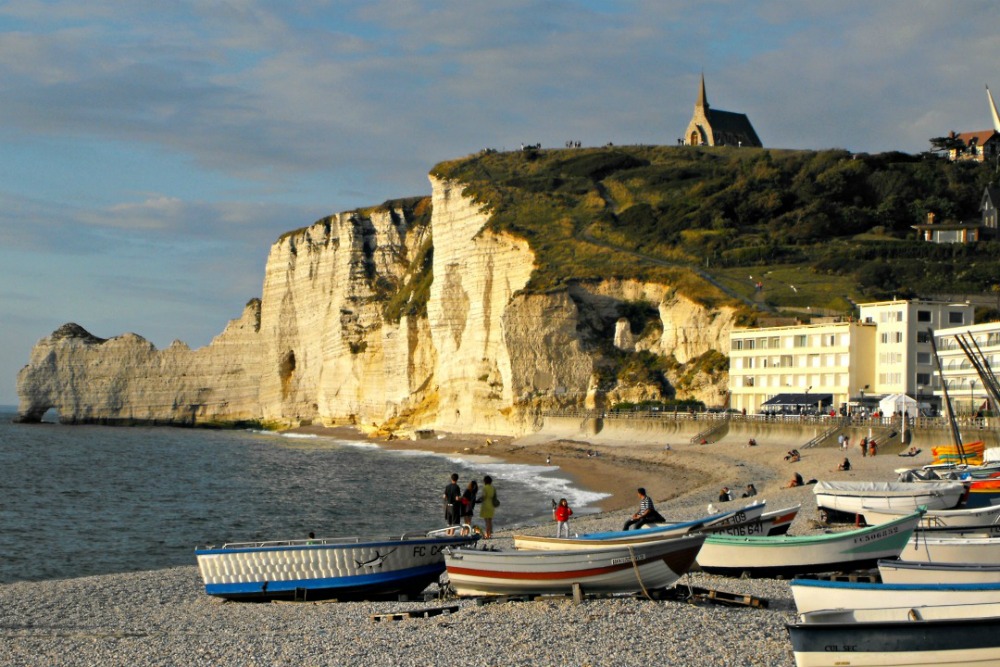
MUST DO IN ÉTRETAT
Esplanade and Beach – This restaurant-lined walkway curves along the pebble beach and is made for an early evening stroll. At dusk, the cliffs are dramatically lit, and the beach is dotted with colourful wooden boats which makes for great photos (like the one above).
Falaise d’Amont and Falaise d’Aval – These iconic cliffs have been shaped into natural arches by centuries of wind and waves. The arch of Falaise d’Amont resembles an elephant dipping its trunk into the sea, and at low tide you can walk right along the beach to its base. From the clifftop at Falaise d’Aval, don’t miss the view of the aiguille (needle)—a tall, narrow spike of rock rising from the sea.
Notre-Dame de la Garde – Perched on the edge of the Falaise d’Amont, this mariner’s chapel dates to 1856. Though destroyed during WWII, it was faithfully rebuilt in 1950 and still offers breathtaking views out over the sea.
Although I haven’t yet had the chance to visit Giverny myself, it remains high on my travel wish list. Just under an hour from Paris, this charming village is world-renowned for its connection to Claude Monet, one of the founders of French Impressionism. Monet lived here from 1883 until his death in 1926, and it’s here that he created some of his most iconic works, inspired by his home and magnificent gardens.
I’ve read that Giverny looks particularly stunning in May and June, when the rhododendrons bloom around the lily pond and the wisteria drapes gracefully over the Japanese bridge. But no matter when you visit, I’m sure the beauty of the place still shines through and it would be a serene and inspiring stop for any art lover or garden enthusiast.
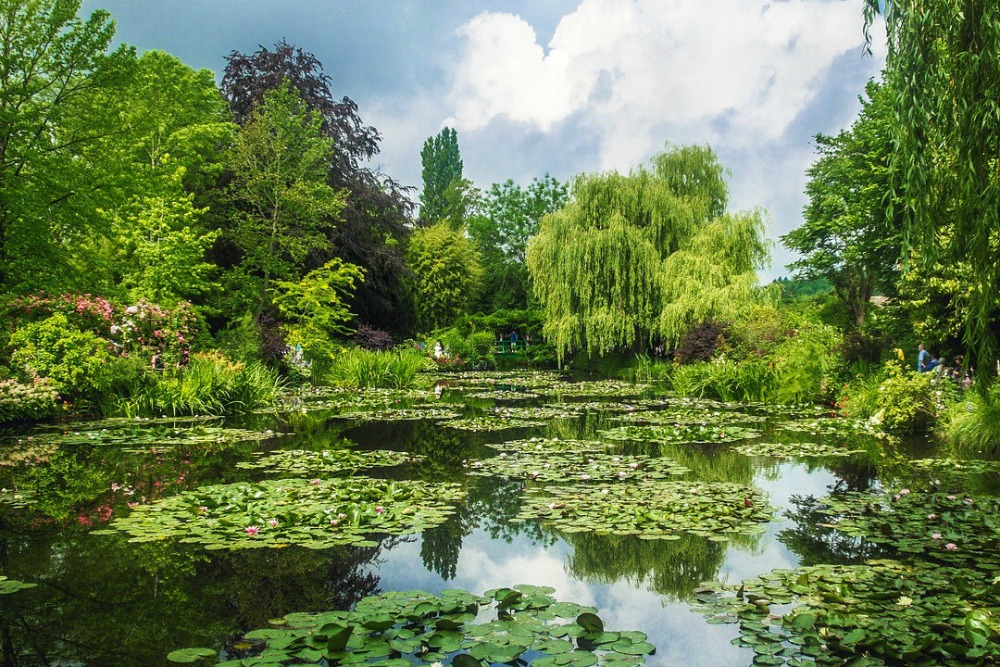
MUST DO IN GIVERNY
Musée des Impressionnismes – This elegant museum explores the history of Impressionism and Post-Impressionism, both in France and around the world. The museum gardens are also worth a wander, featuring flowerbeds arranged by colour and hillsides alive with poppies, daisies, and wildflowers.
Monet’s Water Garden with Japanese Bridge – Step into a living painting. This tranquil garden, complete with its famous lily pond and the Japanese bridge draped in wisteria, is one of the most recognisable scenes in art history.
Monet’s Home – Explore the artist’s personal world with a visit inside his lovingly preserved home. Highlights include his sitting-room studio, dining room, and the bedroom where he lived for over four decades. Many original furnishings remain, offering a rare glimpse into the life of this legendary painter.
Founded in 1517 to replace the silted-up ports of Honfleur, Harfleur, and Caudebec, Le Havre is now France’s second-largest port. Most of the city was destroyed by Allied bombings in WWII, so it lacks the medieval charm of other towns—but that’s precisely what makes it unique. Rebuilt under the vision of architect Auguste Perret, Le Havre’s uniform concrete aesthetic is considered a masterpiece of post-war urban planning and is now a UNESCO World Heritage Site.
During my summer in Le Havre I made it my mission to explore as much of the city as I could on foot every evening. One of my favourite memories was early in my stay, when a city-wide music festival kicked off the summer season. Small bands were set up on street corners and tucked into plazas and it was such fun to follow the sound through the city and stumble across live performances around nearly every corner.
Le Havre is often overlooked when planning a Normandy trip, but I believe it truly deserves a second look for its modern, artistic energy.
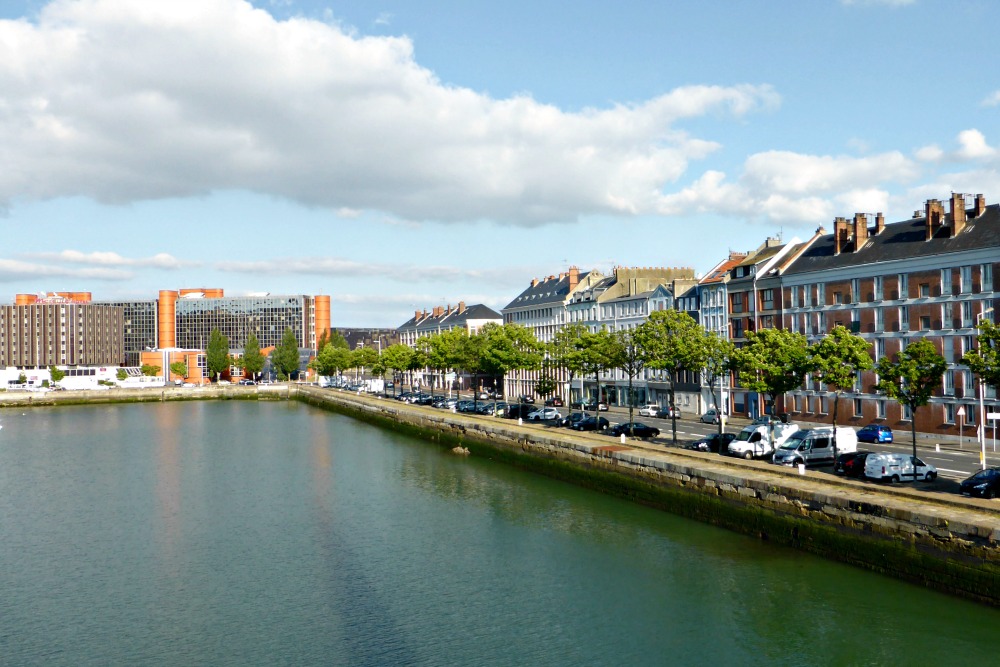
MUST DO IN LE HAVRE
Musée Malraux – Housed in a sleek glass-and-metal structure overlooking the port, this museum offers one of France’s best collections of Impressionist art outside Paris. The airy space—complete with a striking concrete sculpture called “The Eye”—makes for an inspiring visit.
Église St. Joseph – This soaring church, with its 107-metre tower, is both a local landmark and a beacon for ships entering the harbour. Designed by Perret, it may look stark from the outside, but step inside when the sun is shining, and you’ll be rewarded with the glow of thousands of colourful stained-glass panes. I purposefully did not include a photo of the inside so you could be surprised when you see if for yourself, just like I was.
Bassin du Commerce – A lovely area for a waterside stroll, the Bassin du Commerce features a striking pedestrian bridge, the modernist cultural complex Le Volcan, and a moving war memorial. Le Havre also has a wide beach promenade that is perfect for catching the sea breeze at sunset.
During my summer based in Normandy, I rented a car one weekend and made my way to one of its most spectacular sites – Mont St. Michel!
Seemingly rising straight from the sea—or the sands, depending on the dramatic tides—Mont St. Michel is a place of wonder. This rocky islet, crowned by its awe-inspiring abbey, has drawn pilgrims and visitors for over a thousand years. Today, it attracts around three million visitors annually, while a small community of about 50 people still calls it home.
For centuries, the island was connected to the mainland by a tidal causeway. Now, a modern bridge allows water to flow freely beneath it, letting Mont St. Michel return to its natural island state with the changing tides.
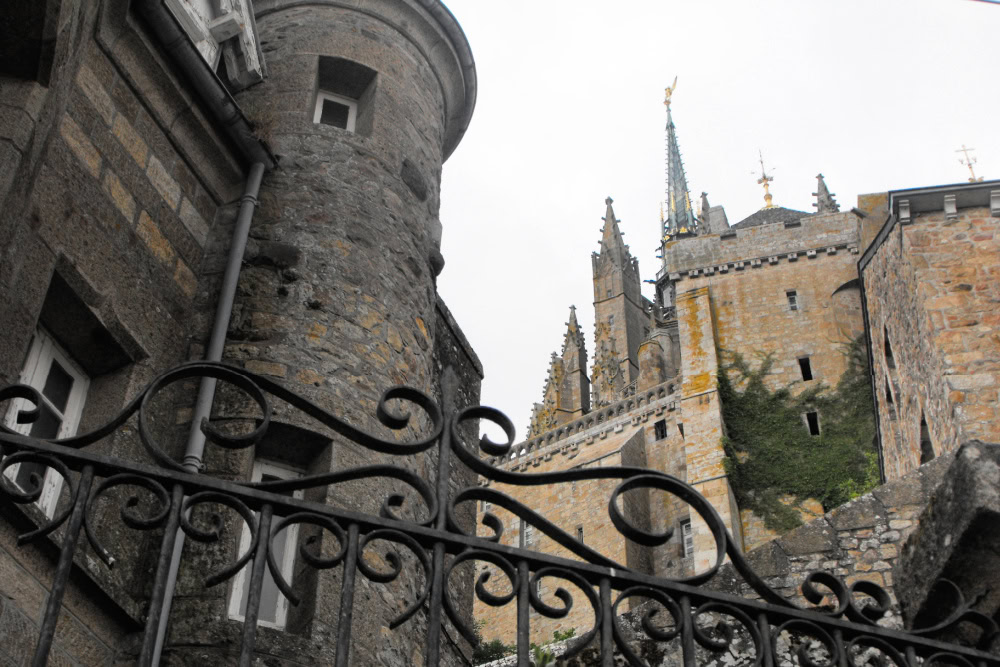
MUST DO IN MONT ST. MICHEL
The Abbey – This spectacular Gothic structure appears to grow right out of the rock itself, with terraced levels that mirror the contours of the island. Visitors can explore the cloisters, the grand refectory, the knights’ hall, and more. I highly recommend Rick Steves’ self-guided walking tour—it’s the one I followed during my visit, and it really helped bring the Abbey’s long history to life.
Grande Rue – Enter through the fortified Porte du Roy, where the portcullis is still visible, and follow the steep, winding cobbled street up toward the Abbey. Once the route of 12th-century pilgrims, the Grande Rue is now lined with bustling souvenir shops and restaurants. Take time to look beyond the crowds—the charming historic details above eye level are worth noticing.
Ramparts – Built to protect against English attacks during the Hundred Years’ War, the island’s ramparts are dotted with towers and sweeping viewpoints. The Tour de l’Arcade, once home to the abbot’s soldiers, now offers visitors a peaceful vantage point over the surrounding bay—especially beautiful at low tide.
From iconic sights like Mont St. Michel and the white cliffs of Étretat to the Impressionist charm of Giverny and the post-war resilience of Le Havre, Normandy is a region that rewards curious travellers.
For me, my time in Normandy offered a chance to slow down and really connect with each place I visited—whether that was by wandering alone through the markets of Étretat, soaking up live music in the streets of Le Havre, or following in the footsteps of Monet and medieval pilgrims.
If you’re planning a trip to France, I hope you’ll make time for Normandy. It might not always be the first destination people think of, but it’s one that leaves a lasting impression. It’s certainly left its mark on me as I still think about it all these years later and hope to return one day to explore again.
I’d love to hear from you!
Have you been to Normandy or are you planning a trip?
Share your favourite places, ask a question, or just say hello—I read every comment and enjoy connecting with fellow travellers!
Some of the links in the post above are affiliate links. This means if you click on the link and purchase the item, we will receive an affiliate commission but this does not affect the price to you. Please read our full disclosure policy here.

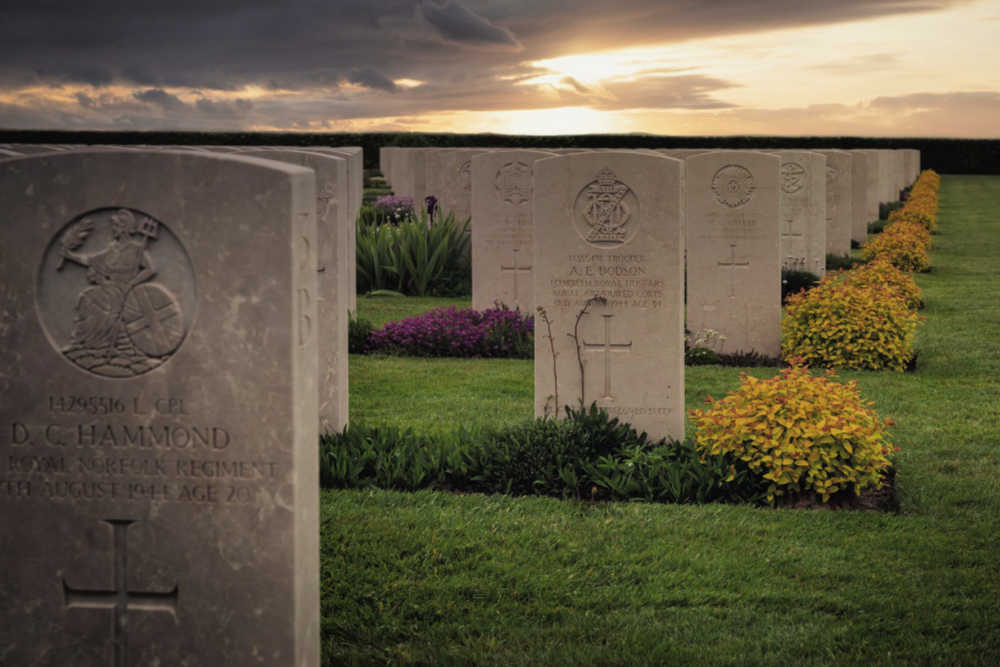
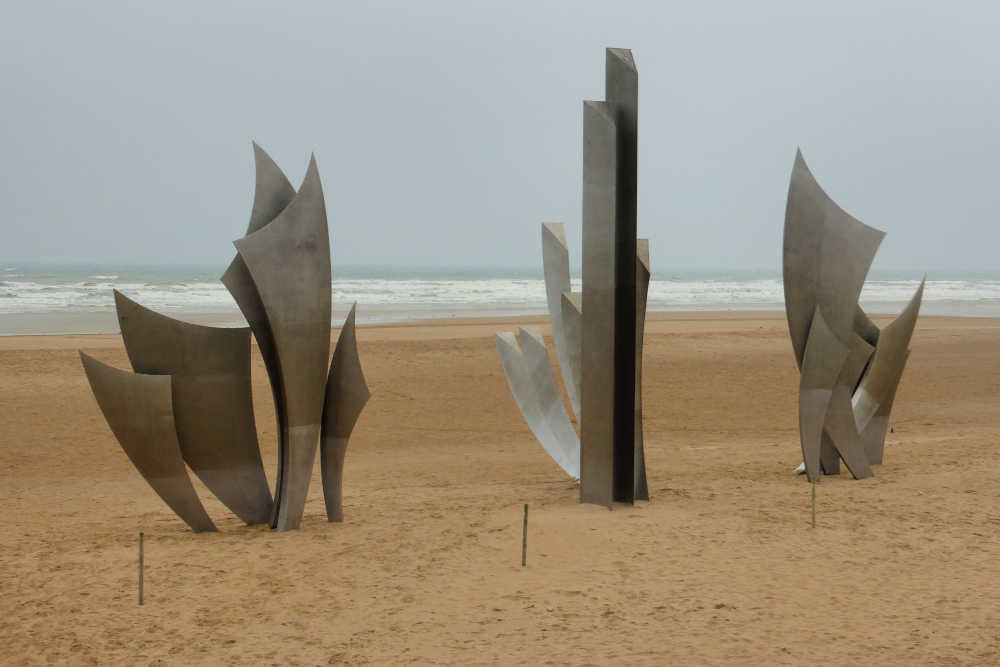
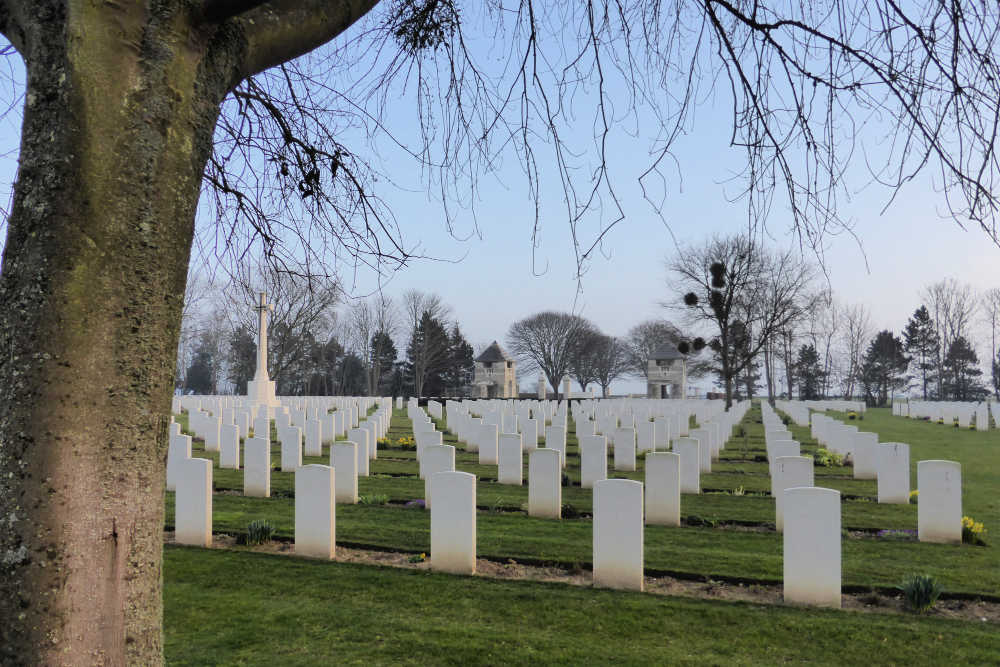
0 Comments